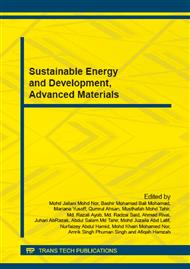p.3
p.9
p.15
p.20
p.26
p.32
p.38
p.44
Effects of Helix Angle on Cutting Performance for Machining Thin-Wall Aerospace Monolithic Component
Abstract:
The thin-walled component is mostly used in the aerospace industry. During machining the thin-walled components, deflection of wall occurs and causes the surface dimensional error. This paper focuses on the effect of end mill helix angle on the surface dimensional error and surface roughness when machining thin wall structure. End mills uncoated carbide were fabricated with a difference helix angle which are 25°, 30°, 35°, 40° and 45°. The results show, helix angle 35° produce smaller surface dimensional error and smoothest followed by 40°, 45°, 30° and 25°. The smaller helix angle provided high cutting force that causes more surface dimensional error due to chatter and reduction of contact time when then end mill engage with the workpiece material. Results from this research help to guide the machinist to machine thin-wall component with the right cutting tool.
Info:
Periodical:
Pages:
3-8
Citation:
Online since:
November 2014
Keywords:
Price:
Сopyright:
© 2015 Trans Tech Publications Ltd. All Rights Reserved
Share:
Citation:


